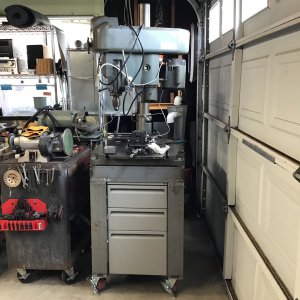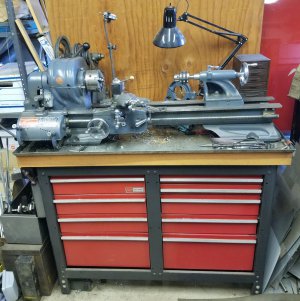- Joined
- May 3, 2020
- Messages
- 229
I'm building a machine base for 2 1-hp drill presses. It's mainly to conserve space and add point-of-use storage. Here's some inspiring links
machine base examples http://lathes.co.uk/aciera/
multi head drill press http://www.lathes.co.uk/aciera22/
How would you approach building a sturdy machine base? My first thought was heavy sheet metal (like 11 ga) with welded corners. My brother, who has some specialty sheet metal experience, suggested a square-tube frame with very thin sheet metal fastened with rivets.
In addition to the base, I'd like to add a bib. I'm a 1-man shop and I already spend a fair amount of time cleaning up. What thickness would be adequate for something like this:
A metal cabinet with a wood insert is also appealing
What thickness would you use?
machine base examples http://lathes.co.uk/aciera/
multi head drill press http://www.lathes.co.uk/aciera22/
How would you approach building a sturdy machine base? My first thought was heavy sheet metal (like 11 ga) with welded corners. My brother, who has some specialty sheet metal experience, suggested a square-tube frame with very thin sheet metal fastened with rivets.
In addition to the base, I'd like to add a bib. I'm a 1-man shop and I already spend a fair amount of time cleaning up. What thickness would be adequate for something like this:
A metal cabinet with a wood insert is also appealing
Caser Ernesto & Figli Machine Tools - lathes
un catalogo del tornio Cesare con testo in italiano. Caser Ernesto & Figli, based at Via Gaspare Aselli 58, Pavia 27100. Caser Ernesto & Figli, con sede in Via Gaspare Aselli 58, Pavia 27100<br>
www.lathes.co.uk
What thickness would you use?



